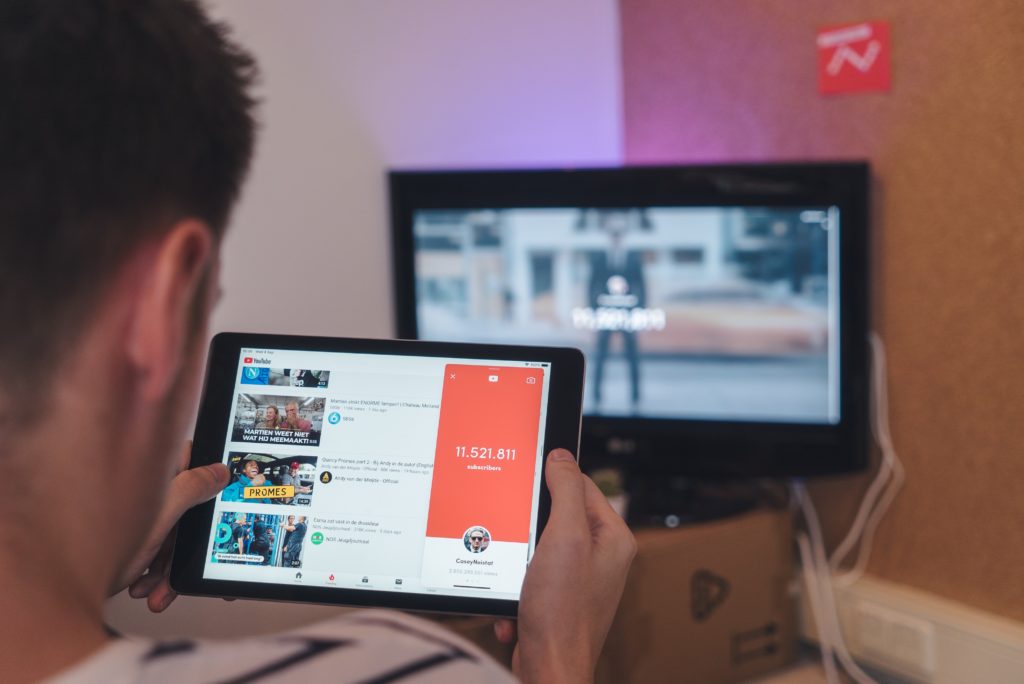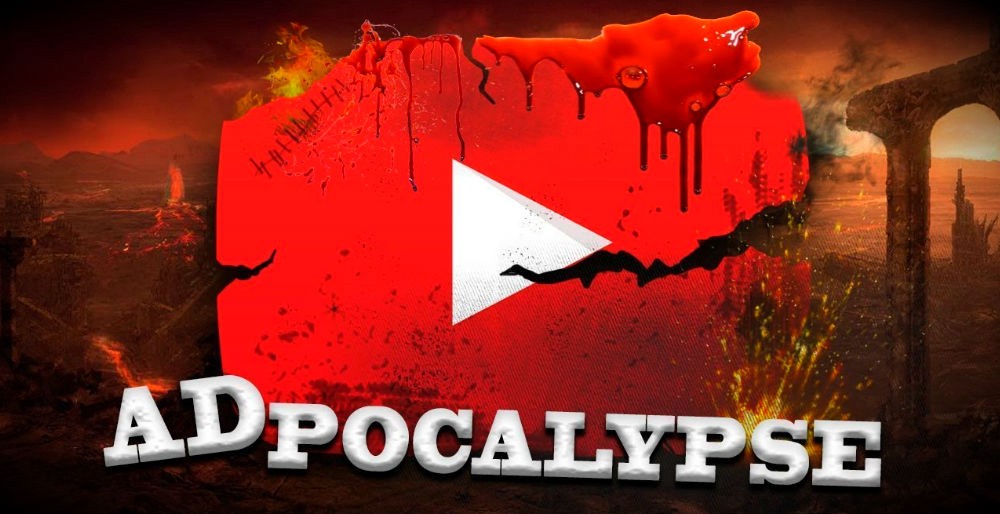If you’re a YouTube content creator and your business model is to monetize videos with advertising, you’ve certainly heard the many debates over the past few years about monetization rules. You may have even heard the term “demonetization”. Advertising monetization on YouTube raises many questions, probably because it is one of the main payment models for creators (others could be product placement, paid partnerships, or premium subscriptions, but we will focus on advertising monetization in this article).
We will first look at the rules around advertising monetization, then at the various problems regularly pointed out by creators regarding this remuneration method. Finally, we will see the alternatives for creators, videographers, and musicians to develop their revenue.

How does monetization on Youtube work and what are the rules?
Not everyone can monetize their content with advertising on YouTube. In fact, there are a number of conditions that must be met in order to be part of the YouTube Partner Program :
- Have eligible content (and all broadcasting rights, including music). Certain types of content such as videos targeting under 13-year-olds or containing certain themes or sensitive topics could not be monetized.
- Live in an eligible country or region.
- Have more than 4,000 hours of viewing time in the last 12 months.
- Have more than 1,000 subscribers.
You will also need a valid AdSense account. Then, YouTube will validate or not your application, and even if you meet these criteria YouTube does not systematically validate accounts? Indeed, your content will be analyzed too. For this YouTube uses an automatic word detection system, scanning your videos can include the theme of your channel. If your content contains, for example, too many insults, or a lot of words around the lexical fields of sex, weapons etc… Then they may decide not to validate your account.
With regard to income potential, the following information should be kept in mind:
- YouTube takes 45% of the advertising revenues ;
- If the users skip the ads, the revenues are less or nil;
- Everything is automated: the advertisers, the number of ads, their frequency, the CPM… The creators have little control over the parameters of the campaigns;
Some video themes pay more, seasonality also plays a role; - On average we can say that 1000 views = 1€ paid back to the creator (before taxes etc…);
To sum up, monetization on YouTube is not for everyone, you need to have YouTube-approved content, make a significant number of views, and obviously make several million views/month to hope to make a living from it.
On the other hand, it is a very powerful automated advertising network, but it offers little control to the creators who suffer from the campaigns (and have no control over the advertisers nor the possibility of advanced ad settings).

What are the main issues with YouTube monetization?
A number of concerns from video creators arise around YouTube monetization :
Demonetization
Content can be often and easily demonetized. As seen before, depending on the topic, some content can be automatically demonetized by YouTube. Indeed, in 2017 and 2019, many major advertisers (such as Nestle, Pepsico, or Mac Donalds) have decided to boycott the platform following concerns about being associated with supremacist or pornographic content. On another level, many artists or content producers have complained in recent years about the illegal use of their content (music or film clips for example) by creators who were monetizing their videos. Since then, Google, YouTube’s parent company, has decided to reinforce security on content and has become increasingly strict by immediately demonetizing (and sometimes even censoring) a large number of contents.
Many designers point to several problems:
- Certain topics considered to be sulfurous are automatically blocked (from then on, content proposing debates on, for example, sexuality or abortion can never be monetized).
- The automatic filters that protect copyrights are sometimes too strict. For example, musician and Youtuber Rick Beato said that his entire video on the history of rock guitar was blocked for using 10 seconds of live footage of Randy Rhoads playing a guitar solo.
YouTube’s policy of “block first and discuss later” penalizes many YouTube users who see a large portion of their income disappear for reasons that are not always fair.
Little control over advertising campaign settings
As we saw in the first part, YouTube’s ad monetization tool for creators offers little control over campaigns. Notably, we can cite
- It is not possible to choose advertisers, nor to make live contracts to play a specific campaign.
- There is little flexibility in the configuration of potential campaigns. For example, you cannot choose the number of ad breaks (which is done automatically, often based on the length of your content). Nor can you define a capping, i.e. a maximum number of times a user can see the same ad on your channel.
- The CPM price cannot be set by a creator. The CPM is the cost that an advertiser pays for 1000 views of his ad. This price is calculated automatically by the YouTube advertising algorithm based on many criteria. Unfortunately, as a creator you cannot set rules regarding, for example, setting a minimum CPM at €10.
Revenue
YouTube takes an important part of the revenues from advertising monetization: 45%. Unless you are a large YouTube partner or a huge Youtuber, this percentage is not negotiable.
A traditional ad network usually takes between 15 and 30% of the advertising revenue. This important revenue share for YouTube is often criticized by creators.
Limited advertising data
The audience data information provided by YouTube is relatively limited. You don’t know who your audience really is, although this data is very valuable. Imagine a creator being able to provide an advertiser (with the consent of its audience) with an exact list of those who watched the ad through to the end or clicked on it.
The most important data is kept by YouTube and not shared. Using YouTube means giving up qualified audience data that could be monetized much better with advertisers if you had it.
Opacity in the monetization rules
Another point often criticized by youtubers is the dependence they have on YouTube. As we know, the algorithm for highlighting content often changes and nobody really knows how it works. The same goes for the monetization rules. The result for the creators is a great uncertainty: will my content be demonetized? What will my advertising revenue be next month?
As we explained in this article, GAFANS have the power. They can decide to change their rules of the game overnight: shut down a YouTube channel, demonetize a video or an entire channel, censor content, broadcast advertisers whose products and values you don’t like…

What are the monetization alternatives for content creators?
On YouTube, product placement or partnership with a brand can be quite rewarding. Usually the contract is made directly between a YouTuber and an advertiser, which avoids any middlemen. However, this requires that you already have a very large audience and an active community. And of course, as everything happens on YouTube you will not be able to provide advanced data to your advertisers about your audience: for example who saw the product placement (to be able to be contacted or re-targeted afterwards).
Merchandising is also a solution, but here it implies that you can manage an e-commerce store separately with suppliers, after-sales service, stock management, etc. It is a real activity, so you will need dedicated resources to take care of it seriously.
Another alternative is to create your own streaming platform. Whether it’s a video platform or even a mobile music or podcast application, but the key is to control the entire platform:
- Control your content: no strikes, no demonetization, no content from competitors next to yours.
- Choose the monetization model: Netflix subscription, pay-per-view, sponsorship… Or a mix of several models to diversify your income! If you decide to continue with advertising, you can choose your advertisers and negotiate much more lucrative contracts (and CPMs).
- Get all the data of your users: viewing sessions, email addresses & more… You will be able to value them much better with advertisers.
- Design your platform the way you want: your colors, your layout without being constrained by YouTube.
- And as a bonus you will even be able to create your own mobile applications, TV applications (Apple TV, Android TV, Amazon Fire TV, Roku, Samsung TV, etc.).
Freeing yourself from YouTube means being able to set your own rules, and regain control over your content, your audience and your monetization.
Warning: we do not push creators to leave YouTube, quite the contrary. It’s a great promotional platform, to make people discover its video content and grow audiences. On the other hand, if you want to make content creation your business, then creating your own streaming platform will be necessary as the main channel and monetization platform.
At OKAST, we offer a turnkey solution to create your own streaming platform to showcase your video or audio content, or even live streams. You have total control over your content and your users (and all their data). And above all you can set up different monetization models such as premium subscription or sponsorship with advertisers.

For more info please contact us at hello@okast.tv